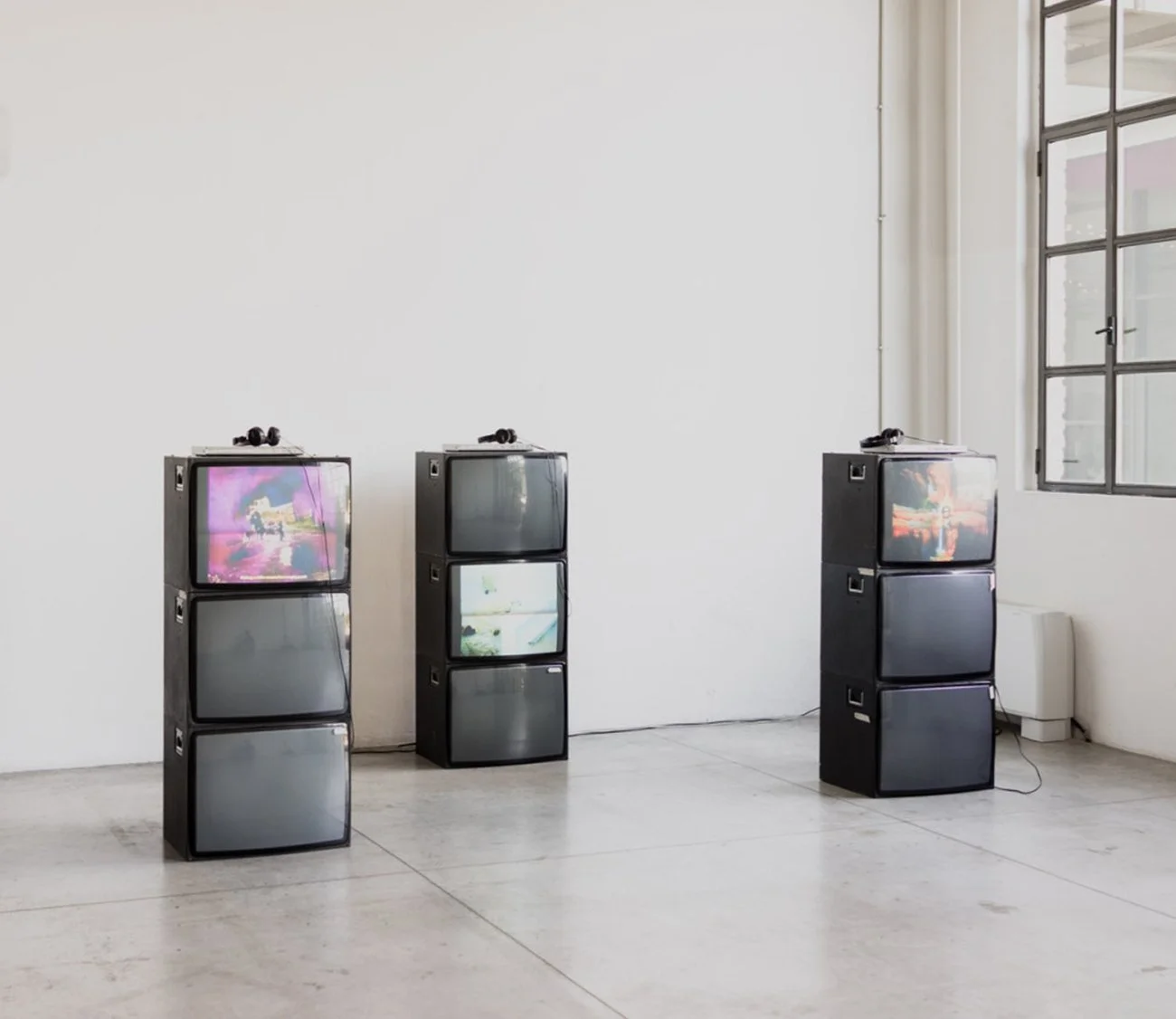Giovanni Lo Castro
Italian artist Giovanni Lo Castro explains the centrality of images in his artistic work, specifically digital imagery in all its ephemerality and complex filigree. Working extensively with video and painting, he finds fascination in their intersection, even if they originate from distant realms, thus being drawn to the exploration of the surface generating from the becoming image of cultural references.
What guides your artistic practice?
My artistic practice is fueled by the exploration of the perceptual potential of imagery. I examine where it resides, how it emancipates itself, and the ways it enriches the viewer's gaze. In recent years, I've been particularly intrigued by how the culture of software and digital imagery effortlessly transcends once-visible barriers between art forms.
Material is what makes a work of art more than the medium itself, a definition that lacks fluidity today.
Material is integral to defining a work of art beyond its medium, a concept lacking fluidity today. In our current historical period, shaped by the internet and extensive archiving, boundaries dictating a unidirectional reading between the arts are fading. Identifying a work of art as matter becomes uncertain. My work navigates this conflict, oscillating between the cultural content an image represents and its container, aiming to create a contradiction that testifies to the lack of solidity and embraces the complexity of the present.
What is your approach to technology, particularly regarding images?
I believe that as we progress, technology assumes greater cultural significance, altering subjectivity and impacting collectivity. Despite the risks of its silent influence on daily life, I maintain a relatively positive view, seeing technology as a contemporary individual's exoskeleton. It alters and enhances our senses, enabling us to observe and perceive unexplored aspects. However, the exaggeration of human experiences undermines perceptual stability, leading to rapid changes in collectivity. I'm particularly drawn to images generated by a machine eye, encompassing surveillance camera shots, spatial mappings in photogrammetry, and the vast field of medical devices, creating a conflict between an inner physical gaze and cultural, emotional introspection.
How is hybridization approached in your installations?
Hybridization is a common thread in my work; it intrigues me. Mixing media and observing the outcomes is at the core of my artistic exploration. Working extensively with video and painting, I find fascination in their intersection, even if they originate from distant realms. Hybridization operates on various levels, not only in the content of a piece but also in its container. Altering the frame consistently leads me to a continual reevaluation of the work.
Could you discuss your most recent project “Metapicture"?
"Metapicture" is one of my latest works, showcased at the eponymous exhibition at Lusvardi Gallery in Corso Buenos Aires in Milan in September 2023. It's a video project designed as an exercise in perception within the exhibition itself. After setting up all the works, I created a three-dimensional mapping of the gallery using Blender. This 3D project was altered by integrating other photogrammetries collected over the past two years, resulting in a hybrid space. Subsequently, I tracked the camera to explore the space. The viewpoint is not human; the camera moves through the air between rooms, passing through walls and bodies, exiting and re-entering the gallery, maintaining a single sequence without ever disconnecting. It is an exercise both inside and outside on multiple levels, not only visually but also conceptually.
More to read




















